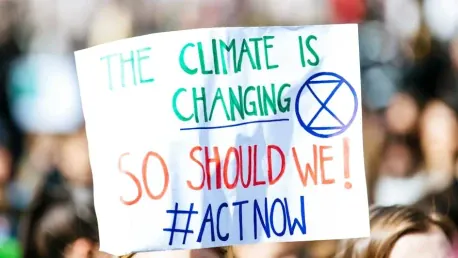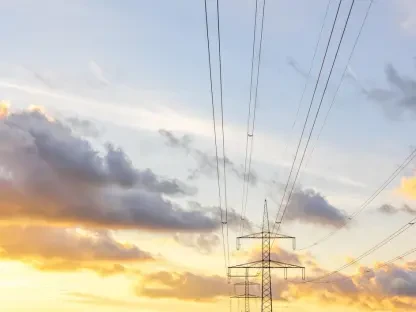Black neighborhoods across the United States are at the forefront of developing innovative climate solutions, driven by community pride, collective action, and self-sufficiency. This movement illustrates a significant shift from mere survival amidst systemic neglect to the determination to build thriving, sustainable futures despite political hostility. The narrative showcases an inspiring transition across various Black communities, embracing environmental justice and pioneering forward-thinking solutions to create healthier, more resilient environments.
Community-Led Initiatives
Transforming the Lower Bottoms in Oakland, California
Once a heavily polluted truck corridor, the Lower Bottoms neighborhood in Oakland, California, has become a notable example of community-led transformation. Tireless local efforts have resulted in the installation of solar panels and the creation of community gardens, which have made a positive impact on the environment and the residents’ quality of life. Children who once faced health risks from pollution can now enjoy playing outside in a greener, healthier neighborhood. This metamorphosis epitomizes the power of grassroots action and underscores the importance of community mobilization in achieving environmental justice.
The transformation of the Lower Bottoms is a testament to the broader trend of Black communities refusing to wait for external assistance and instead taking the initiative to redefine their surroundings. The establishment of green spaces and the integration of sustainable technologies are empowering residents and fostering a sense of collective achievement. This narrative is not only about environmental renewal but also about reclaiming agency and prioritizing the health and well-being of future generations. The success in Oakland stands as a beacon of hope and a model for other communities grappling with similar challenges.
Detroit People’s Food Co-op
Detroit’s Black-led cooperative grocery store, the Detroit People’s Food Co-op, is another shining example of community-driven success. Launched by the Detroit Black Community Food Security Network and Develop Detroit, the co-op addresses both food insecurity and economic challenges facing the area. By providing access to organic and culturally relevant foods, the co-op ensures that community members have healthier dietary options while also supporting local Black-run farms. This cooperative model embodies self-sufficiency and economic resilience, highlighting the importance of local ownership and investment.
The Detroit People’s Food Co-op fosters a self-sufficient local economy by encouraging cooperative ownership and local sourcing. It serves as a hub for education and economic empowerment, offering workshops and training on agricultural practices and cooperative business models. The initiative illustrates how Black communities are addressing systemic issues through innovative solutions that cater specifically to their needs and cultural context. By creating a sustainable economic ecosystem, the co-op is empowering the community to take control of its food sources and economic resources, setting a precedent for similar initiatives nationwide.
Environmental Advocacy and Activism
Memphis Community Against Pollution
In Memphis, Tennessee, Black-led environmental advocacy has achieved significant milestones in the fight against industrial pollution. A notable victory includes the closure of Tennessee Sterilization Services, a facility notorious for its high cancer risk due to air pollution. Despite the lack of prompt regulatory action, groups like Memphis Community Against Pollution have maintained persistent advocacy, showcasing the effectiveness of local activism in achieving environmental justice. The continued efforts of these groups underscore the critical role of community-driven movements in demanding accountability and securing investments for healthier futures.
The closure of Tennessee Sterilization Services highlights the importance of local voices in environmental battles. By mobilizing residents and leveraging collective power, Memphis environmental advocates have demonstrated that communities directly affected by pollution can lead the charge in holding industries accountable. These grassroots efforts reveal a broader narrative of resilience and determination, as Black communities stand up against systemic neglect and fight for their right to clean air and healthier living conditions. This activism sets a powerful example of how dedicated local efforts can result in significant environmental and public health victories.
Legacy of Environmental Activism in Warren County, North Carolina
The environmental activism legacy in Warren County, North Carolina, marks a historical and ongoing struggle for environmental justice. Arthur Brown’s protest against toxic soil dumping in the 1980s laid the groundwork for a continued fight for a healthier environment, a torch now carried by his son Patrick Brown. Patrick’s engagement in sustainable farming on the same land signifies a powerful cycle of resilience and commitment to transforming historically polluted and neglected sites into areas of growth and empowerment. This legacy underscores the generational dedication to environmental justice and sustainable development.
Patrick Brown’s sustainable farming initiatives are more than just agricultural efforts; they are a reminder of the continued struggle against environmental injustices faced by Black communities. By converting land once tainted with toxic waste into productive and sustainable farms, the Browns’ efforts symbolize reclaiming and repurposing spaces of historical pain into sources of community strength and nourishment. This story reflects the broader theme of Black communities using ingenuity and determined action to rewrite narratives of environmental degradation, creating new legacies of sustainability and self-sufficiency.
Sustainable Development and Economic Self-Sufficiency
Blacks in Green in Chicago’s South Side
On Chicago’s South Side, the organization Blacks in Green is spearheading an ambitious project to create a “sustainable square mile,” aimed at making the community self-reliant and resilient. The initiative includes plans for affordable housing, community farms, and renewable energy installations, providing a comprehensive approach to sustainable urban development. Additionally, the project involves transforming Emmett Till’s childhood home into a multipurpose center, reflecting a broader narrative of reclaiming history and fostering resilience within the community. This holistic approach highlights the potential of localized efforts in achieving long-term sustainability and economic independence.
Blacks in Green’s endeavors in Chicago illustrate a multifaceted strategy to uplift the community through sustainable practices. By integrating affordable housing with renewable energy solutions and community farming, the organization is addressing immediate needs while building a foundation for future resilience. The emphasis on making the community self-sufficient aligns with the overarching trend of Black neighborhoods taking control of their economic and environmental destinies. This comprehensive model serves as an inspiring blueprint for similar communities striving for sustainable development and economic empowerment.
Jo and Joy Banner’s Fight in Southern Louisiana
In southern Louisiana, Jo and Joy Banner’s victory against a proposed massive grain terminal represents a landmark achievement in the fight against corporate pollution and racial injustice. Their efforts to block the terminal and purchase their ancestral plantation echo the broader struggle of Black-led environmental activism. The Banner sisters’ determination to reclaim and protect their heritage highlights the potency of community action against adverse political and economic conditions. This story emphasizes the significance of protecting historical lands and the deep-rooted connection between environmental justice and cultural preservation.
The Banners’ fight in southern Louisiana exemplifies the deeply intertwined nature of environmental justice and the preservation of cultural heritage. By purchasing and securing their ancestral plantation, they have not only warded off the threat of industrial pollution but also preserved a vital piece of their family’s—and the community’s—history. This victory stands as a testament to the strength and perseverance of Black-led environmental movements, demonstrating how reclaiming land and resources can serve as powerful acts of resistance and empowerment in the face of systemic challenges.
Reclaiming Land and Resources
Reclaiming Land in Urban Areas
Increasingly, Black communities are reclaiming land in urban areas to create green spaces, community gardens, and urban farms, which serve to reintroduce nature into cityscapes and foster environmental stewardship. These efforts are not only aimed at providing access to fresh produce and healthier lifestyles but also at fostering a sense of community and engagement. By transforming vacant lots and neglected spaces into vibrant, sustainable environments, these communities are challenging the narrative of urban decay and demonstrating the potential of grassroots initiatives to reshape urban landscapes.
Reclaiming urban land for green spaces and community gardens involves much more than physical transformation; it is also about reclaiming community pride and collective agency. These initiatives often become hubs for educational activities, cultural events, and social gatherings, strengthening communal bonds and promoting environmental awareness. The process of turning neglected urban areas into flourishing green spaces is a powerful act of taking control over one’s environment, fostering resilience, and promoting a sustainable urban lifestyle. These grassroots efforts provide a blueprint for other urban communities seeking to revitalize their neighborhoods and ensure a healthier future for their residents.
Integrating Green Technologies
The integration of green technologies, such as solar panels and geothermal grids, is becoming increasingly prevalent among Black communities focused on sustainability. These technologies offer dual benefits: they reduce carbon footprints and lower energy costs, contributing to economic self-sufficiency. Community-led solar projects and renewable energy cooperatives are gaining traction, showcasing innovative approaches to achieving sustainable development while addressing economic challenges. These efforts are reflective of a broader trend towards embracing technological advancements to build resilient and environmentally conscious communities.
The adoption of green technologies represents a forward-thinking approach to community development, addressing both environmental and economic concerns. By investing in renewable energy solutions, Black communities are not only reducing their reliance on traditional energy sources but also creating pathways for local economic growth. These initiatives often involve training and employing local residents, further embedding the benefits of green technologies within the community. Such projects exemplify how sustainable development can go hand in hand with economic empowerment, reinforcing the narrative of self-sufficiency and resilience in the face of ecological and financial challenges.
Building Resilient Futures
Education and Youth Engagement
Education and youth engagement are critical components in building resilient futures, with Black communities taking proactive steps to invest in programs that teach young people about environmental stewardship, sustainability, and climate justice. These educational initiatives empower the next generation to continue the fight against climate change and to advocate for the well-being of their communities. By involving youth in sustainability projects and fostering an early awareness of environmental issues, these communities are ensuring that future leaders are well-equipped to champion the cause of climate justice.
Educational programs focused on environmental stewardship often go beyond traditional classroom settings, incorporating hands-on activities, community projects, and real-world applications. Such approaches not only enhance learning but also instill a sense of responsibility and ownership over local environmental issues. By prioritizing education and youth engagement, Black communities are laying the groundwork for a sustained and informed activism that will continue to challenge and address environmental injustices. These efforts underscore the importance of equipping young people with the knowledge and skills necessary to build a more sustainable and equitable future.
Collaborative Efforts and Partnerships
Black neighborhoods throughout the United States are leading the way in developing creative climate solutions. This drive stems from a strong sense of community pride, collective effort, and a desire for self-reliance. It’s a remarkable shift from merely surviving systemic neglect to ambitiously creating thriving, sustainable futures, even in the face of political opposition. This movement exemplifies an inspiring transformation in various Black communities, where environmental justice is prioritized, and forward-thinking solutions are embraced to foster healthier and more resilient environments. These neighborhoods are not only tackling climate change but are also addressing long-standing environmental injustices that have disproportionately affected them. By focusing on renewable energy, urban gardening, and sustainable practices, they are turning challenges into opportunities to build better, more resilient communities. This proactive approach showcases the determination and innovation within Black communities, setting a powerful example for others to follow in the fight for a more sustainable future.









